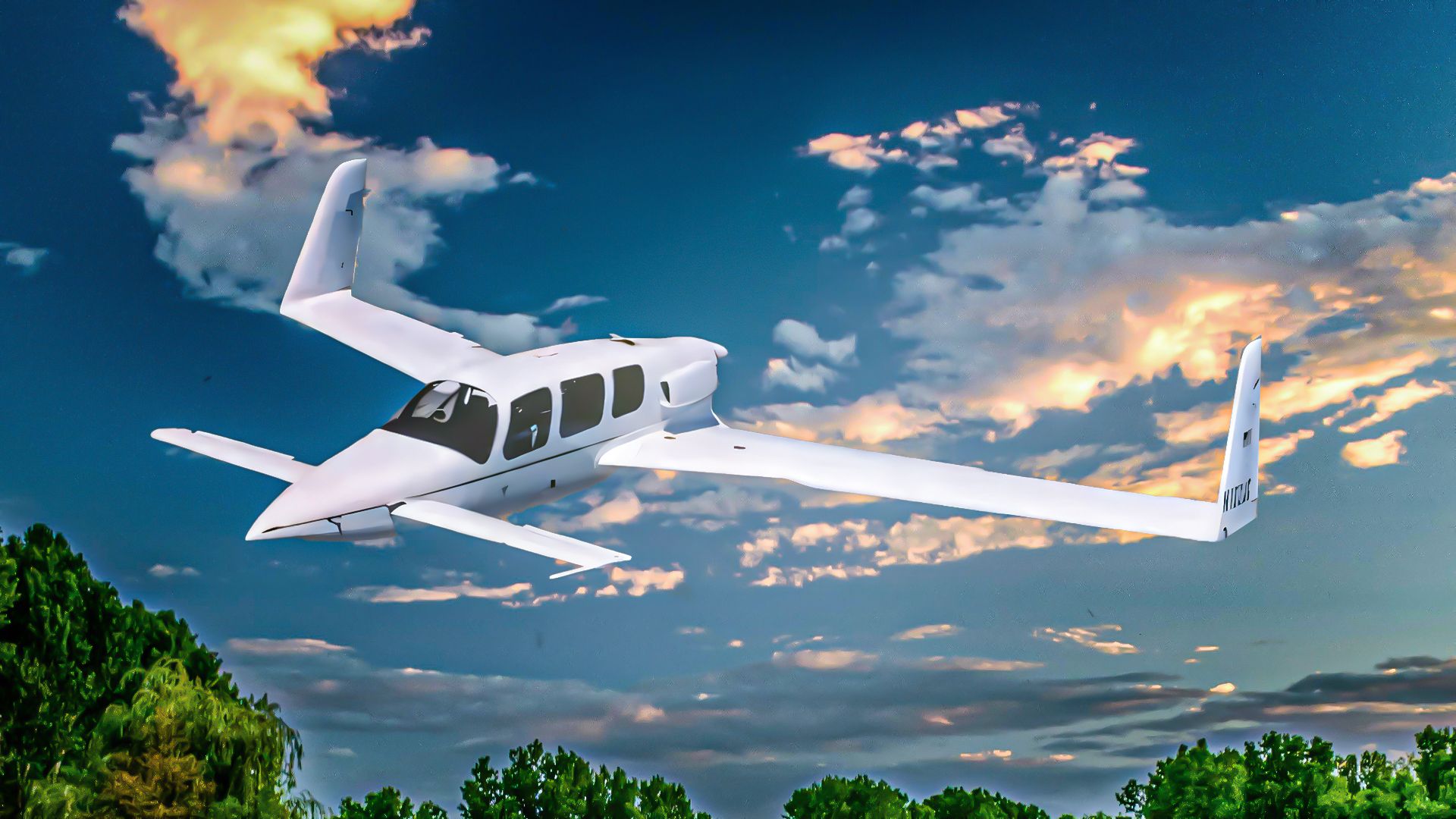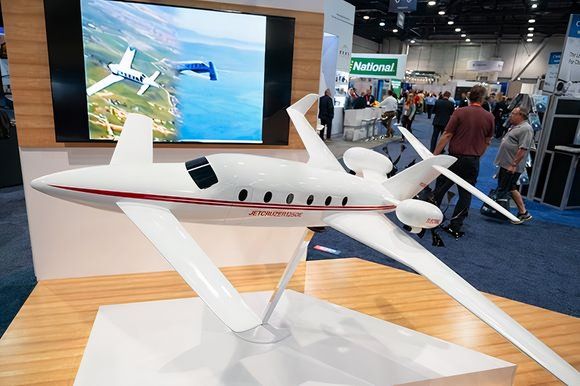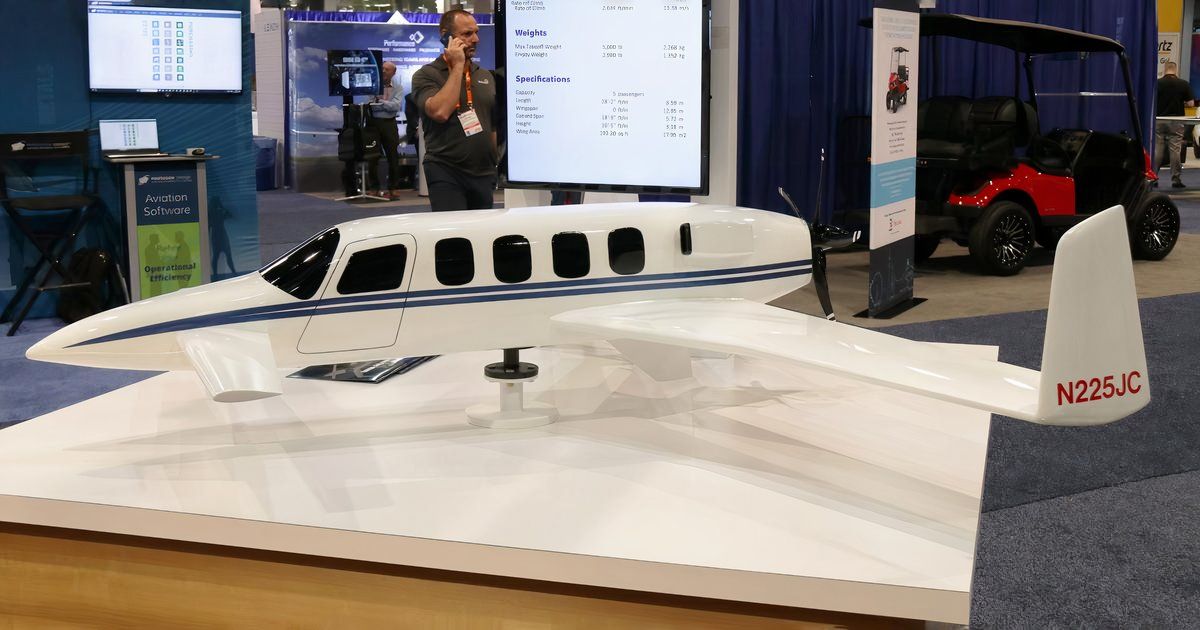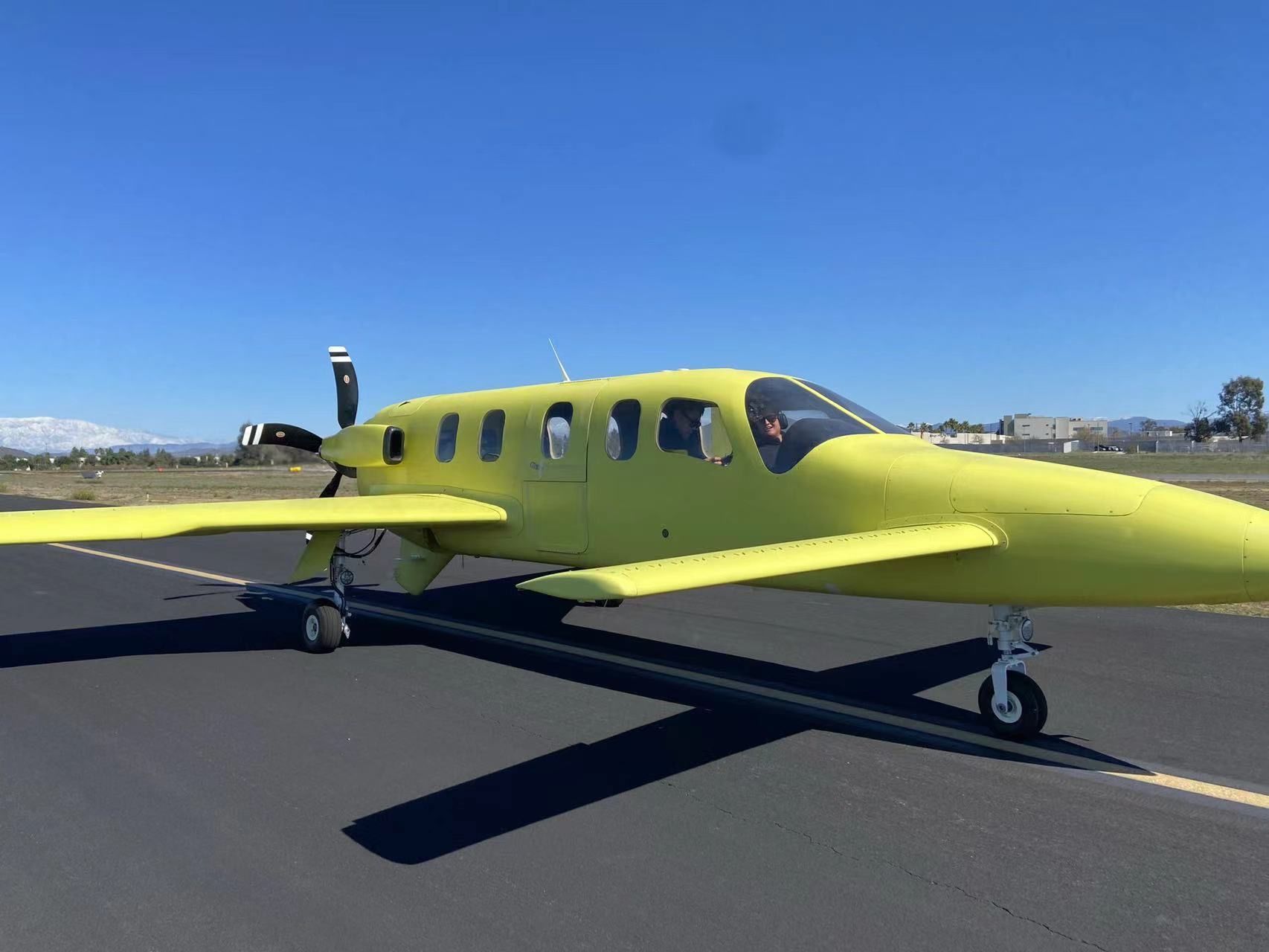Summary
- Jetcruzer 450, a unique aircraft design, has been acquired by a new owner after a period of dormancy.
- The Jetcruzer 450 was the first aircraft to achieve spin resistance certification from the FAA in 1994.
- A new chapter for Jetcruzer begins as Jetcruzer International plans to receive the FAA Type Certificate and fly the 450 in July 2024.
What happens when aerospace engineers think outside the box? Odd-looking aircraft designs that seek to shift performance paradigms often appear. The Jetcruzer 450 is such an aircraft—a design from the past with a chance to be new again. This single-engine pusher aircraft, originally developed by Advanced Aerodynamics and Structures Inc. (AASI), stands out in aviation with its unconventional design and ambitious airframe and propulsion goals.
Rescued from dormancy
There is renewed interest in the design after a long period of inactivity, and a new owner has acquired the prototype test articles and intellectual property related to the aircraft. The Jetcruzer 450 prototype is unique, with its single turboprop engine driving a pusher propeller, a prominent canard, and swept wings with finned vertical stabilizers. This configuration allows for a tailless design.
Photo: Brett Schauf | ShowNews
The Jetcruzer holds a special place in history as the first aircraft to achieve spin resistance certification from the FAA in 1994.
Jetcruzer 450: The Pioneer
The story of the Jetcruzer began in 1983 when the initial design work began. Fast-forward to 1989, and the prototype of the Jetcruzer 450 flies, propelled by an Allison 250-C20S engine. You can read an earlier Simple Flying article about the Jetcruzer here.
Jetcruzer technical specifications
- Length: 28 feet 2 inches
- Height: 10 feet 5 inches
- Wingspan: 42 feet 2 inches
- MTOW: 5,000 lbs.
- Powerplant: 1 x Pratt & Whitney Canada PT6A-27 turboprop
Photo: Barry Ambrose
Jetcruzer 500: The pressurized evolution
Despite the 450’s achievements, including FAA Type Certification, AASI decided not to put it into production. Instead, they set their sights on a pressurized version, the Jetcruzer 500. The Jetcruzer 500 featured a stretched and pressurized fuselage, increased cabin length, powered by the Pratt & Whitney Canada PT6A-66A engine. The prototype of this variant first flew on August 22, 1997, with a second prototype following in November of the same year.
But here, the story takes a turn. Despite orders for around 200 units, the Jetcruzer 500 faced some design challenges, including noise, high stall speed, and an aft CG problem due to the rear pusher engine and propeller. These problems led to the suspension of the Jetcruzer 500’s development in 2002.

Related
Why Does The Piaggio P.180 Avanti Have Wings On Its Nose?
The aircraft boasts fast speeds at a fraction of the direct running costs.
Jetcruzer 650 and Stratocruzer 1250
AASI envisioned the Jetcruzer 650 as a larger 12-passenger variant. The high costs of the Jetcruzer 500 development program took their toll on ASSI’s plans, and the company suspended the 650 program. Another larger design aimed at the commercial market was the Stratocruzer 1250—a turbofan-powered business jet with an intercontinental range. This ambitious project also fell victim to a lack of financial backing and never progressed beyond the design stage.
Post-AASI
AASI ultimately decided to auction off the Jetcruzer project. Innova Aircraft, a division of Innova Aerospace of San Antonio, TX, stepped in and acquired the project in 2004, planning to offer a new version of the Jetcruzer. However, their stewardship was short-lived, and by 2005, development again halted. Innova Aerospace ceased operations in 2018.
Photo: Jetcruzer International, LLC
A new chapter began when it seemed like Jetcruzer’s story was over. In 2017, Victor Tao, owner of Farrar Aerospace, based in Riverside, CA, formed Jetcruzer International, LLC, and acquired the aircraft design and its intellectual properties. Tao wasn’t just interested in preserving the past—he had plans to restore and upgrade the Jetcruzer 500E with new avionics and electric engines.
Recent developments
Jetcruzer performance specifications
- Maximum speed: 370 mph
- Cruising speed: 360 mph
- Range: 1,701 miles
- Ceiling: 30,000 feet
Simon Roads, Jetcruzer International, Inc. Vice President of Sales, Marketing, and Business Development, told Simple Flying that the company initially plans to fly the already FAA Type Certificated Jetcruzer 450 in July 2024. An electric-powered variant will be installed on the second Jetcruzer airframe acquired during the asset purchase.
“We’ll fly a Jetcruzer with an electric motor by early next year.”
“This new electrified version aims for a range of 1,300-1,400 NM” Roads said. He added that FAA airworthiness certification of the electric 450E as a variant is expected by 2026-2027.
The legacy of Jetcruzer
The AASI Jetcruzer did not achieve commercial success in its original form. It was not alone; similar radical designs like the Beech Starship and the Piaggio 180 Avanti failed to succeed commercially. But the Jetcruzer legacy lives on. It stands as a testament to innovation in aviation, pushing the boundaries of what’s possible in aircraft design.
The Jetcruzer challenged conventional wisdom and, in doing so, perhaps set the stage for future innovations—particularly the prospect of a hydrogen-fueled aircraft that exhausts only water into the atmosphere. Its unique design features – the canard configuration, the pusher propeller, and the tailless design – all represent a bold departure from traditional aircraft design. While these features presented challenges, they also opened up new aerodynamics and aircraft performance possibilities.
Moreover, Jetcruzer’s journey from concept to prototype to its current state of revival illustrates the long-term nature of aviation development. In aviation design, no potentially viable idea truly dies; it just waits for the right time and technology.
Among the evolving trends in aviation, mainly the growing focus on environmental sustainability and efficiency, the Jetcruzer’s unconventional design may find new relevance. The potential electric and hydrogen-electric variants and the prospect of a 20-passenger form factor could position this unique aircraft at the forefront of the next generation of environmentally friendly aviation.
Jetcruzer International’s website states the company plans to relaunch the model 450 with P&W PT-6 power under its original FAA Type Certificate.
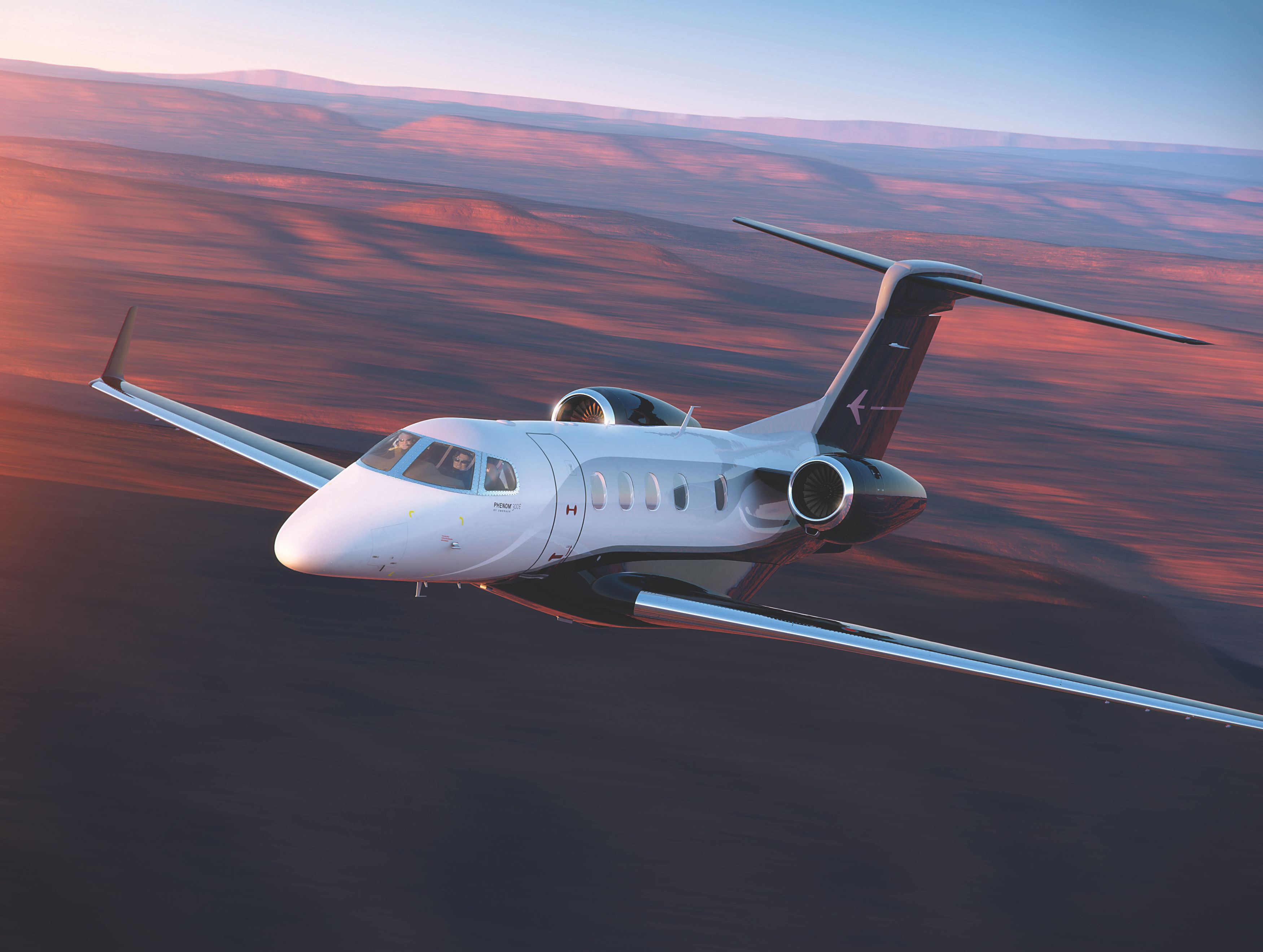
Related
Embraer’s Phenom Is The World’s Best Selling Light Jet For 11 Consecutive Years
Remaining popular, over 700 of the aircraft have now been delivered globally.

